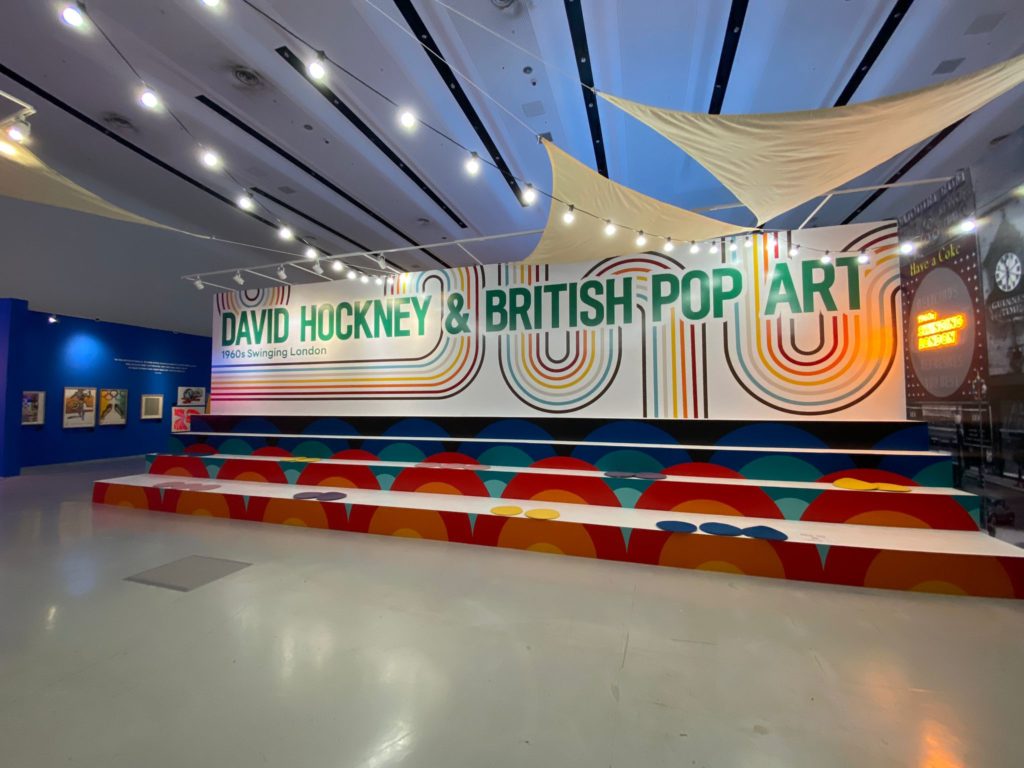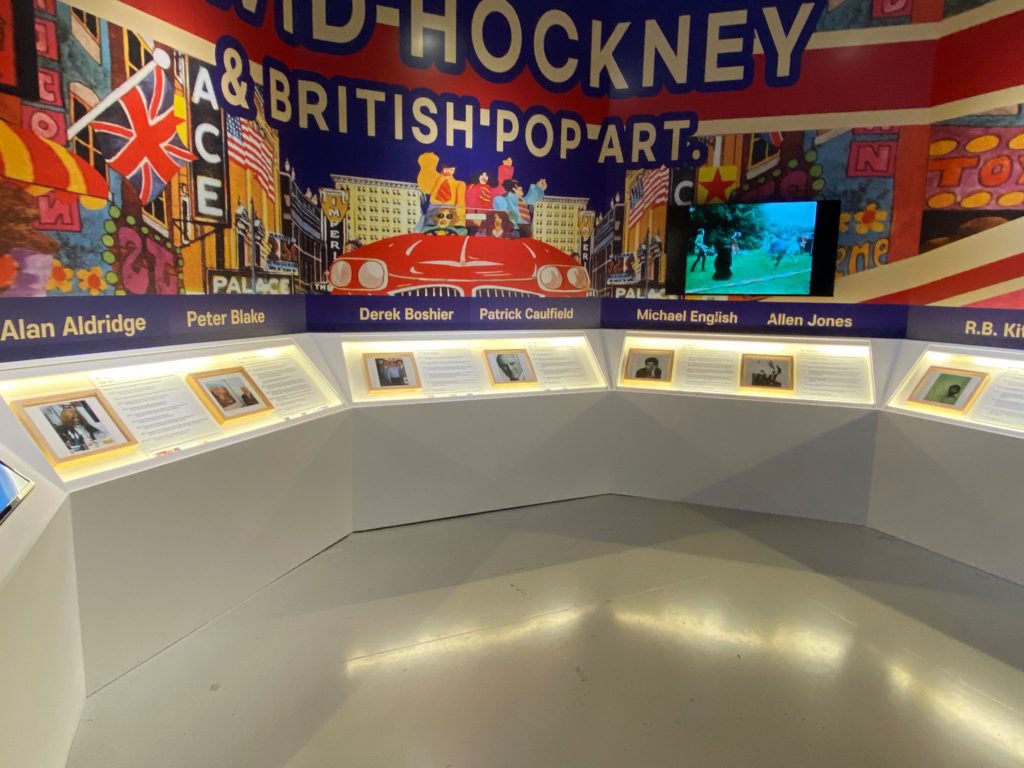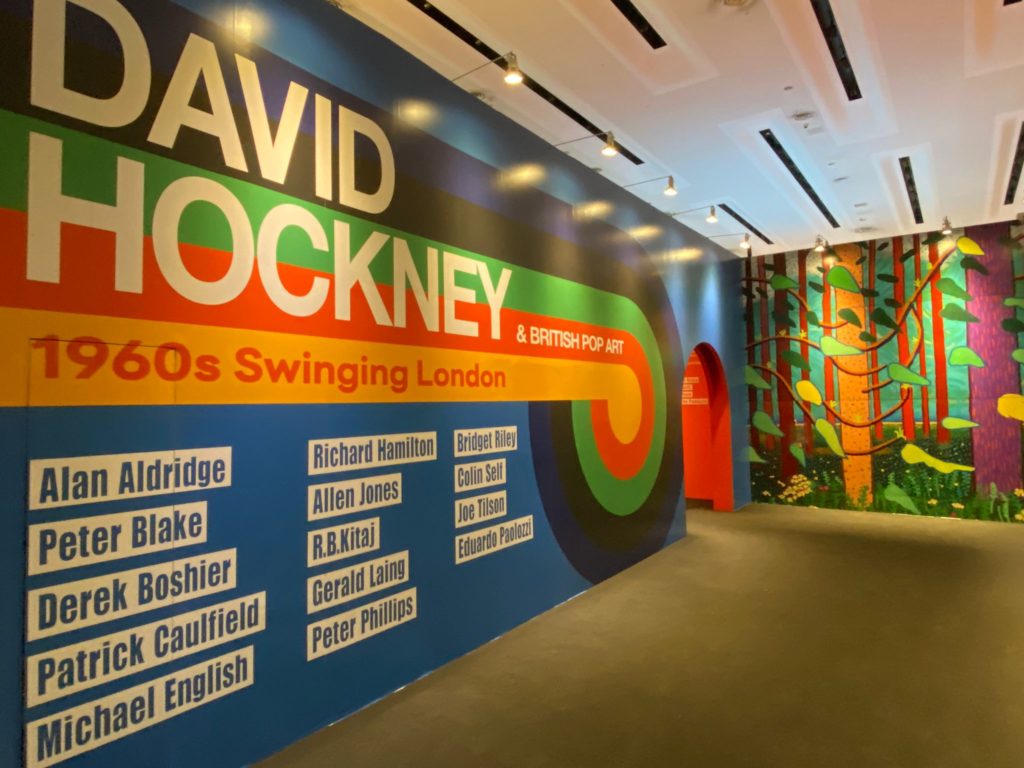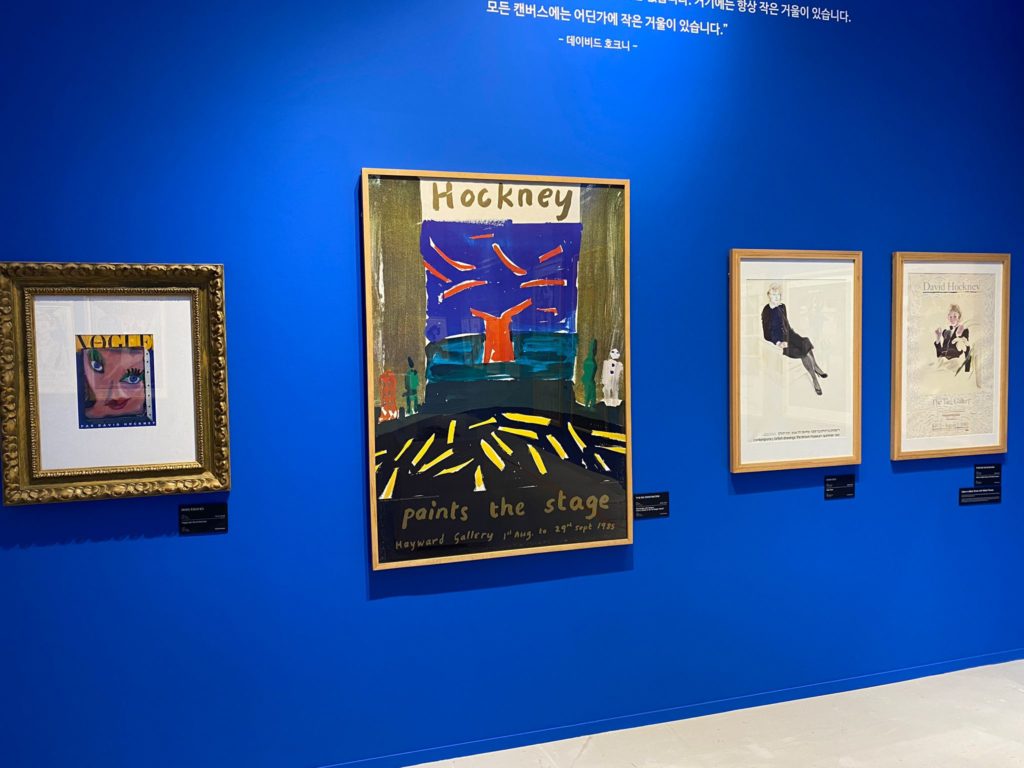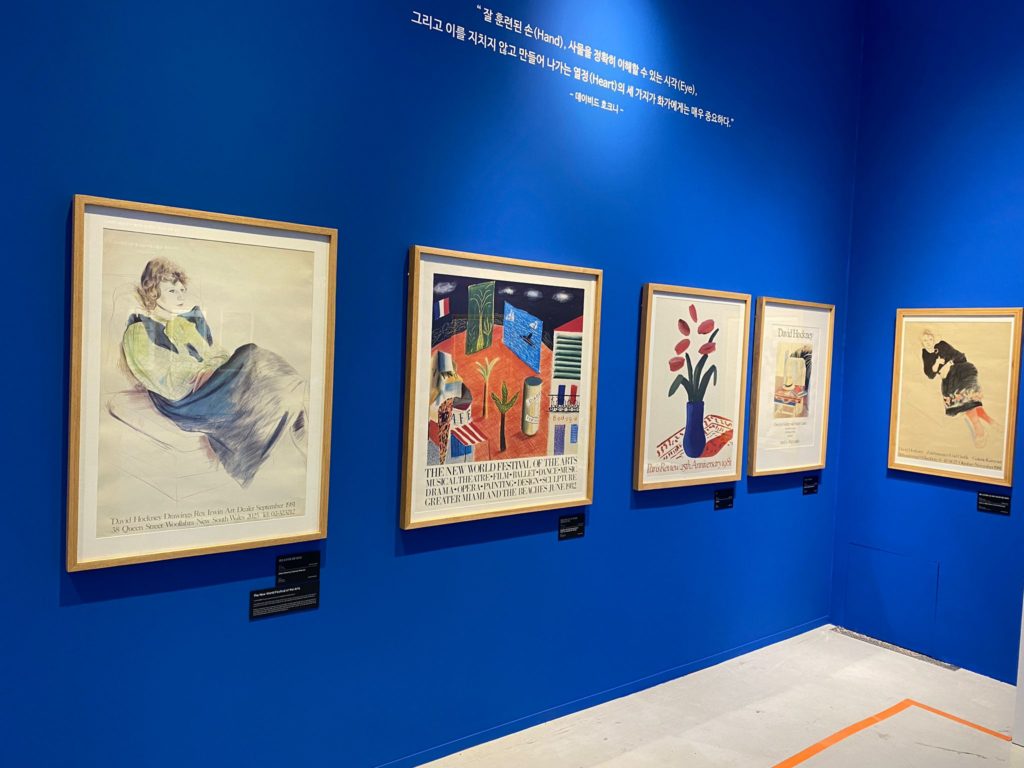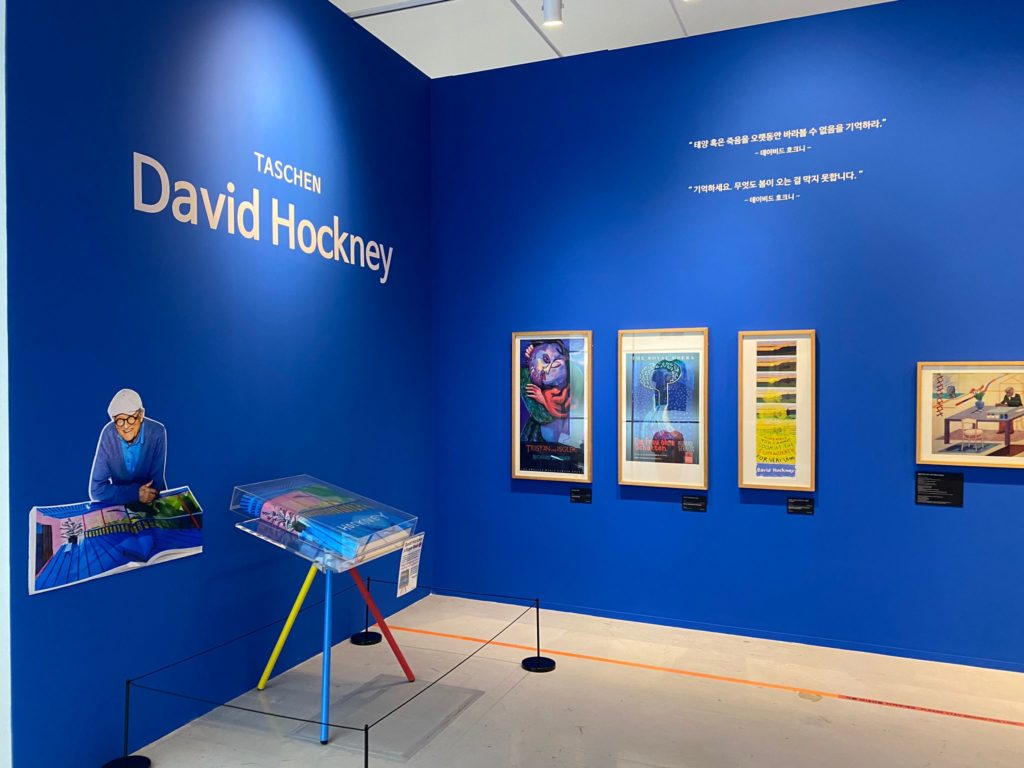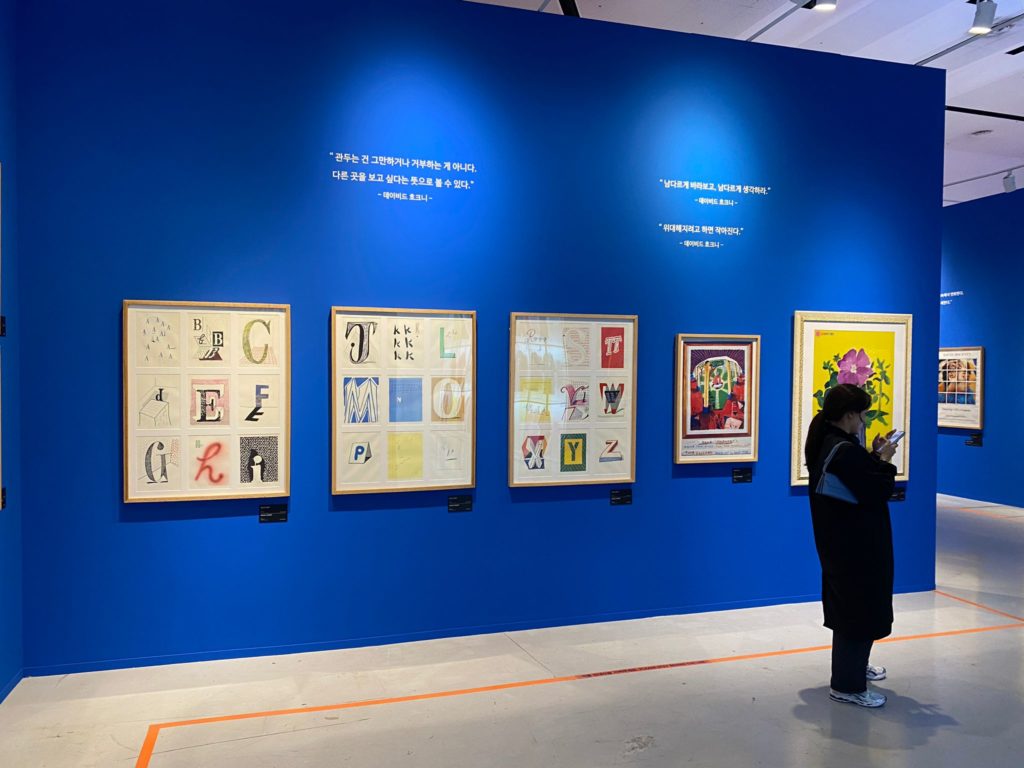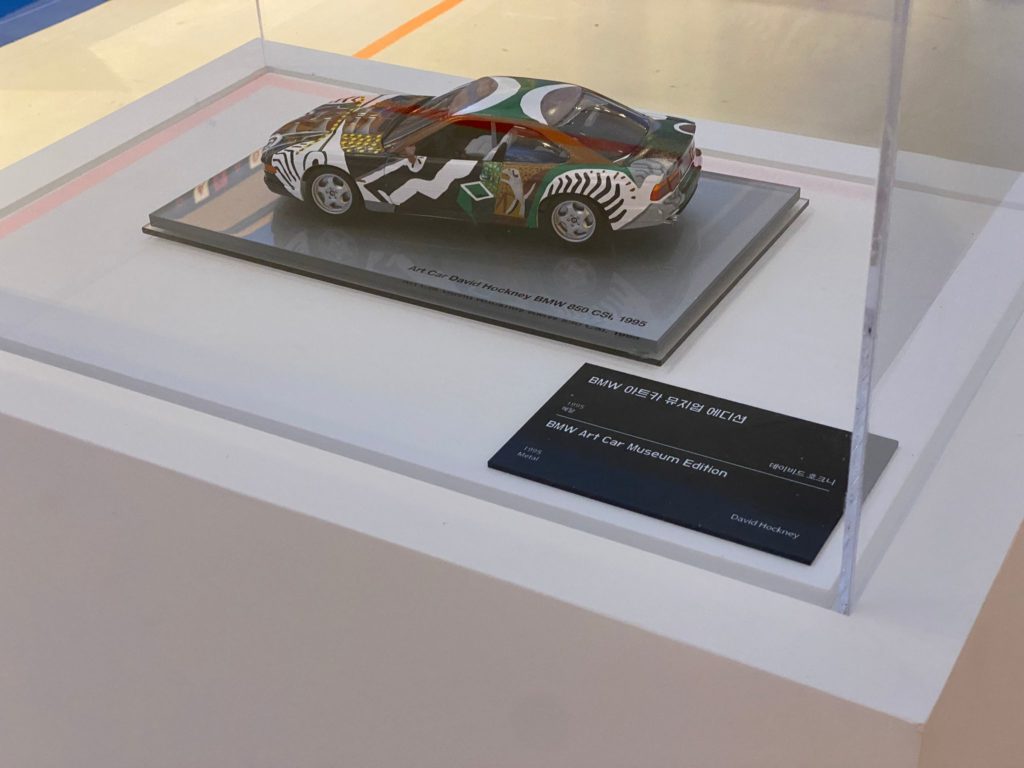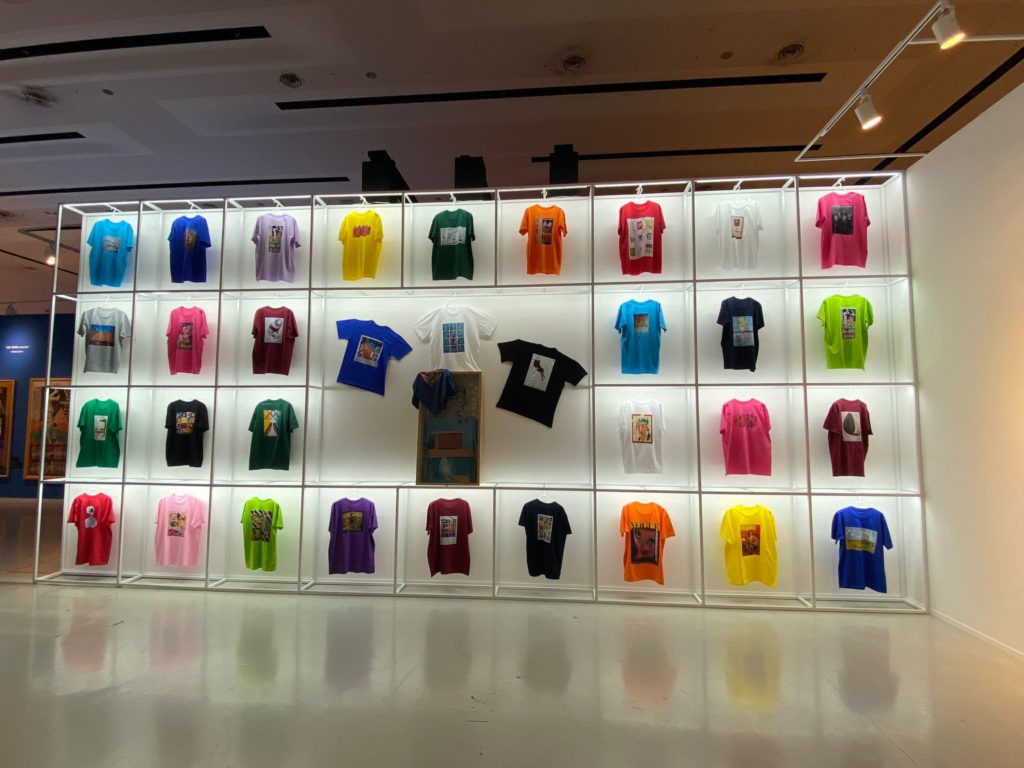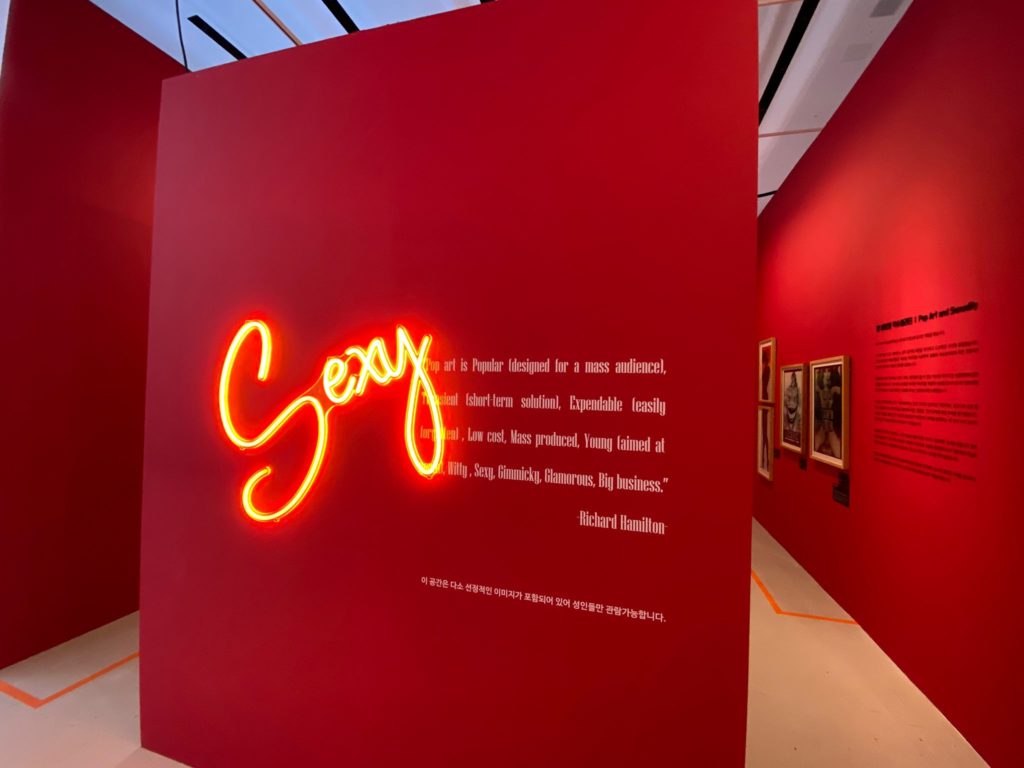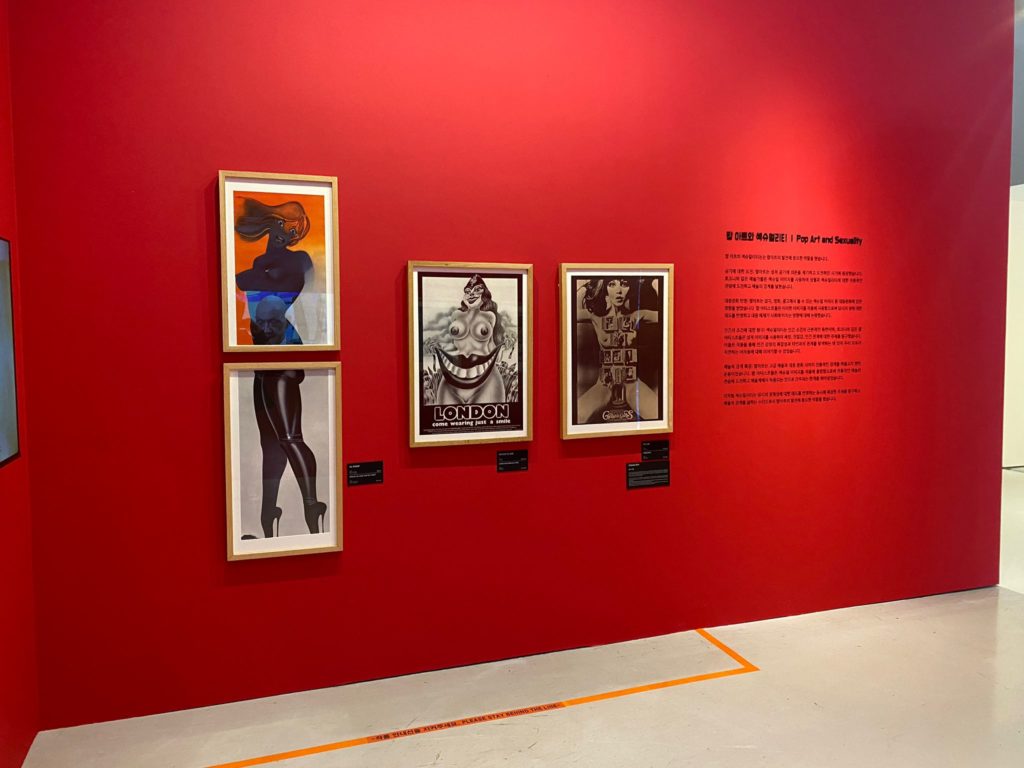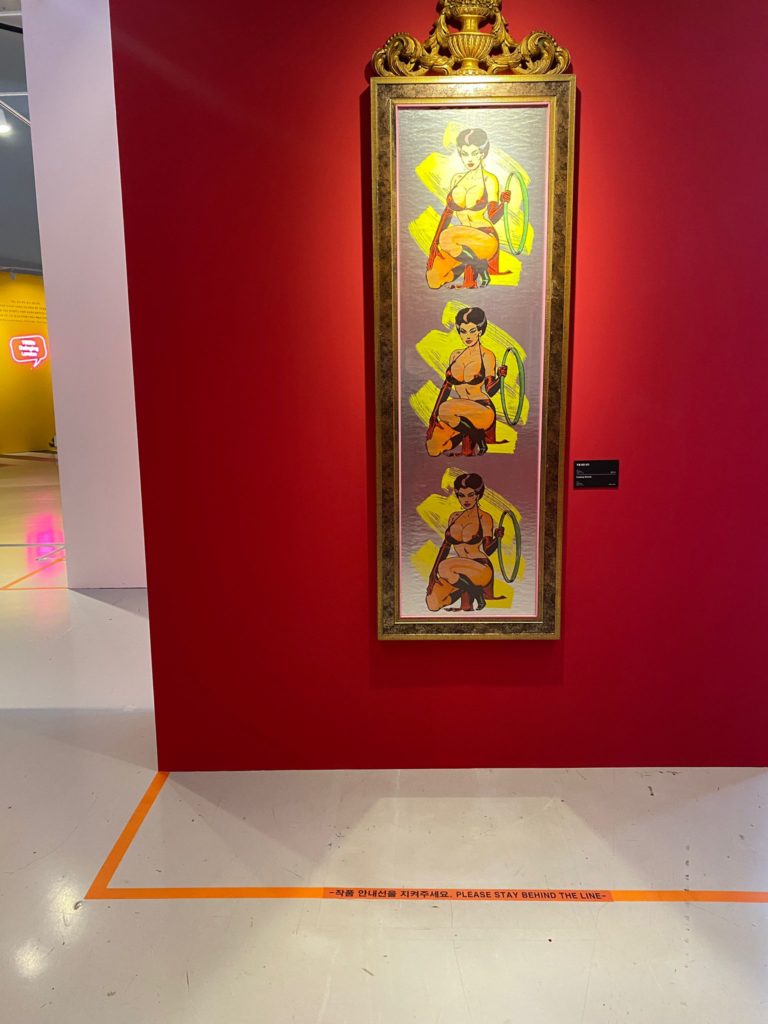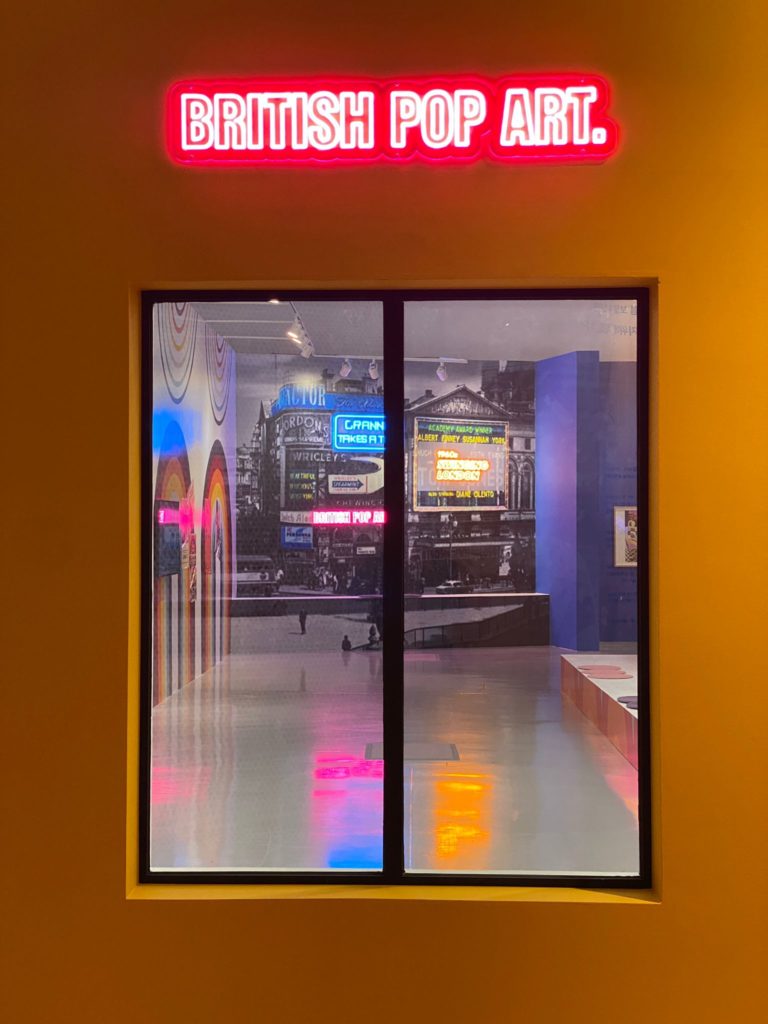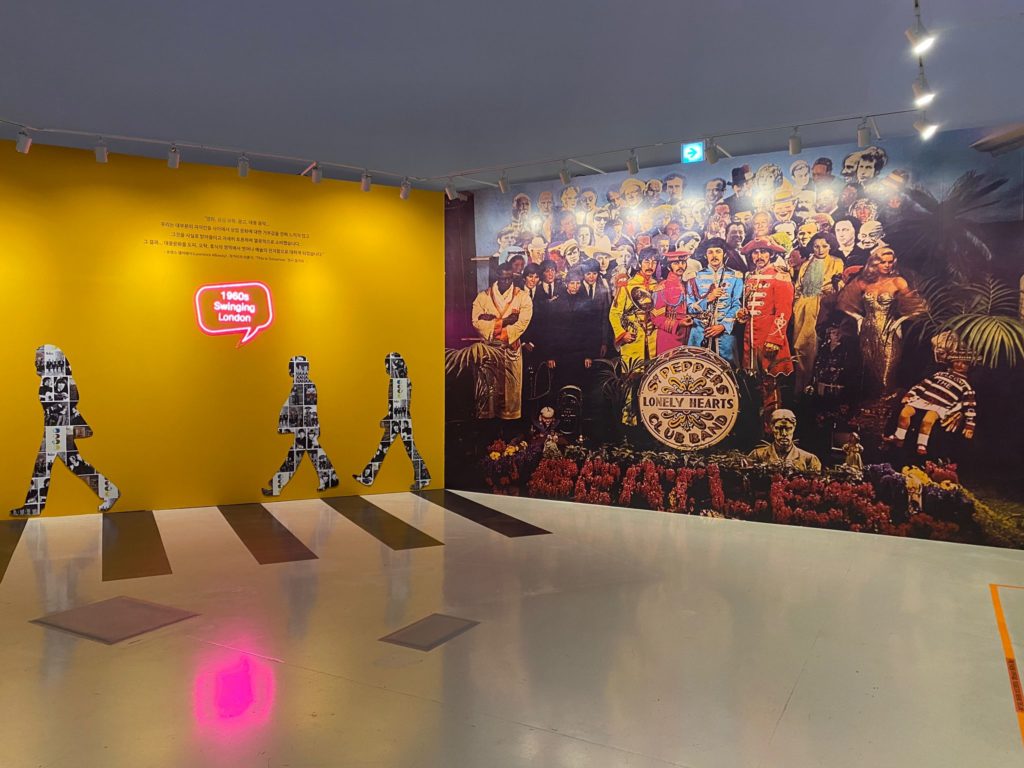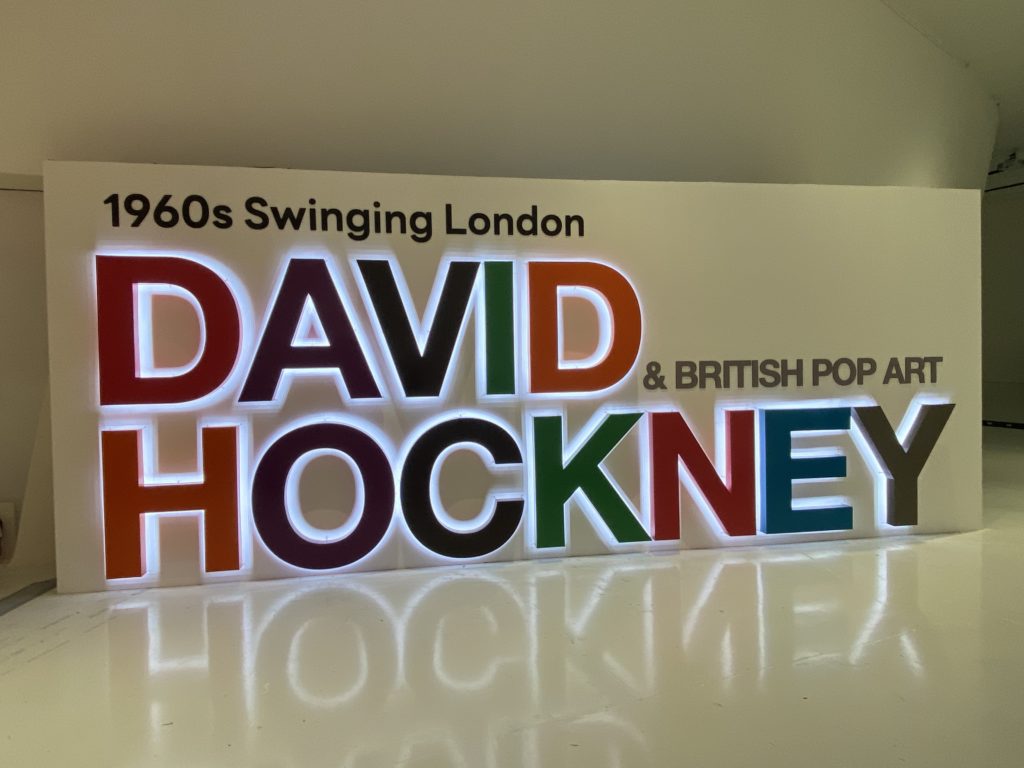David Hockney & British Pop Art
Organised by: XCI · Aurea Cultura i Art · Rumor Artworks.
Coordinated by: Aurea Cultura i Art.
This exhibition includes engravings, lithographs, prints, offset prints and other art pieces designed as consumer items, including records, dishes, nutcrackers, painted paper, model cars scaled to 1:18, perfumes, watches, matchboxes and ashtrays. All the pieces come from the José Luis Rupérez collection.
Pop Art was a mid-20th century art movement that aimed to become popular among the masses. Emerging by the hands of young artists, the art pieces were mass-produced, glamorous and generated money. At the same time, however, this trend was initially conceived to be ephemeral. While it is generally believed that Pop Art began in New York in the early 1960s, it was in fact already being produced by British artists in the late 1950s.
The Pop Art era in Britain is also known as the Swinging Sixties, and London was the Swinging City, the iconic city of the popular youth movements that had been in vogue since the late 1950s. Swinging London was the capital of change, culture for all, mass culture, art as fashion, and music.
This exhibition explores David Hockney and fourteen other British artists, all members of the youngest generation of the pop movement, known as RCA, as they had come through the Royal College of Art in London. Also explored are the relationships that formed among these artists and what each of them individually brought to Pop Art as a movement.


